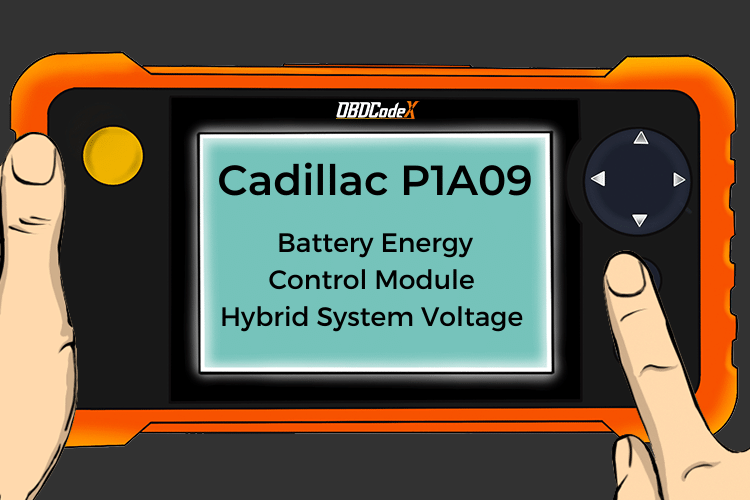P003A: Turbocharger/Supercharger Boost Control A Position Exceeded Learning Limit
Is your scanner showing P003A?
No worries. We'll show you what it means and how to deal with it.
P003A: Turbocharger/Supercharger Boost Control A Position Exceeded Learning Limit
OVERVIEWWhat Does The P003A Code Mean?
Turbochargers, superchargers, and any other forced induction (FI) systems for that matter, use energy generated from the engine (i.e.: exhaust pulses, belt-driven screw-type, etc.) to increase the amount of air that can be introduced to the combustion chamber (increased volumetric efficiency).
Given the fact that, in forced induction systems, intake pressures need to vary and need to be adjusted according to the operator’s many power needs. Manufacturers use a form of boost control valve (AKA, Waste-gate, boost control solenoid, etc.), which is monitored and controlled by the ECM (Engine Control Module), to make sure the air/fuel mixture is stoichiometric (ideal). It does this, by mechanically adjusting the “vanes” in the charger.
These vanes are responsible for adjusting the amount of boost (intake pressure) to the chamber. As you can imagine, a problem within the boost controlling component, may cause drivability issues. The problem is, when the ECM loses control of the boost, typically, your vehicle goes into “limp” mode to avoid engine damage (via over/under-boost conditions causing a potentially damaging rich and/or lean A/F mixture).
As far as the letter “A” goes here, it could be to distinguish a connector, wire, circuit group, etc. That said, the manufacturer’s specifications is the best resource you could have for this.
The ECM illuminates the check engine light (CEL) with P003A and related codes when it detects a fault within the boost control system.
The P003A DTC is activated when the ECM (Engine Control Module) detects the position of the “A” boost control arm (connected to the vanes), to be out of desired range(s).
What Are The Symptoms Of The P003A Code?
Symptoms of a P003A trouble code may include:
- Low, erratic and/or abnormal power levels
- Overall poor drivability
- Decrease in throttle response
- Trouble driving up hills
- Vehicle enters “limp” mode (i.e. fail-safe)
- Intermittent driveability symptoms
What Are The Potential Causes Of The P003A Code?
Causes for this P003A code may include:
- Defective or damaged boost control solenoid (e.g. lever stuck, broken, bent, etc.)
- Corrosion causing high resistance (E.G: Connectors, pins, grounds, etc.)
- Wiring issue (e.g. Frayed, open, short to power, short to ground, etc.)
- ECM (Engine Control Module) internal issue
- Excessive exhaust soot in vanes of charger, causing stagnant high/low/incorrect boost levels
- Boost control module issue
- Exhaust leak
How Serious Is This P003A Code?
Severity is set to moderate-high. When there is a problem within the forced induction system, you risk altering the air/fuel ratio. Which, could, in my opinion will, cause significant engine damage if ignored or left unattended. Not only do you run the risk of damaging internal engine components but you will be getting terrible fuel mileage in the process, so it is in your best interest to repair any faults within the forced induction system.
How Can You Fix The P003A Code?
Basic Step #1
An important note to remember is that, forced induction systems generate a dangerous amount of heat and will seriously burn your skin if unprotected and/or engine is cool. That said, visually locate the boost control solenoid. Typically, these are mounted directly to the charger itself but not all times. Once located, make sure its mechanical functionality is up to par.
This is imperative because after all, it mechanically controls your charger and boost pressures. If you can manually move the lever from the solenoid to the charger housing, that’s a good sign. Keep in mind though, in some systems, it way not be possible to do this.
Basic Step #2
I’ve seen, at times, these solenoids possess adjustable levers which aids in finding the “sweet” spot. Of course, this varies significantly between manufacturers so do your research first.
NOTE: Be as non-invasive as possible here. You do not want to damage charger components as they tend to be expensive.
Basic Step #3
Depending on your particular setup, the module may be mounted directly to the boost control. As an assembly let’s say. If so, Make sure there is no signs of water intrusion. Any sign of corrosion/water/damage, and the assembly (or if possible, just the module) will most likely need to be replaced.
Basic Step #4
Pay close attention to the harnesses going to the boost control solenoid. These are routed in close proximity to a damaging amount of heat. The majority of the time, if heat damage is present, this will be evident early in the troubleshooting steps.
Recommended Parts
Below are some recommended auto parts to help you address the trouble code affecting your vehicle and get it running smoothly again:
>>> WORKPRO 582-piece Crimp Terminals, Wire Connectors, Heat Shrink Tube, Electrical Repair Kit
>>> Dorman 86689C 399 PC Automotive Electrical Repair Kit
>>> ECU
Note: During the purchasing process, please check carefully whether the part you want to buy fits your car!
Check This Video For Reference
Reference Sources
P003A: Turbo/SC Boost Control A Exceeded Limit, OBD-Codes.




